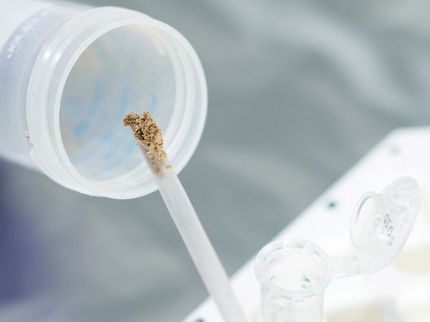Kaspar Hauser was 99.9994 percent not a prince
New DNA analyses spark controversy over origins
The identity and origins of Kaspar Hauser have been the subject of research and debate for almost 200 years. In addition to the opinion that he was merely a more or less pathological liar and deceiver, the most enduring theory is that he was the hereditary prince of Baden, born on September 29, 1812, who died at the age of just 18 days and even before his name was given.
In a current research project in which Walther Parson from the Institute of Forensic Medicine at the Medical University of Innsbruck is playing a leading role, new DNA analyses are now being presented that resolve a long-standing controversy surrounding Kaspar Hauser's origins. In these analyses, carried out in Innsbruck in 2019 and in Potsdam in 2020/21, new and considerably more sensitive methods were used, which confirm the results from 1996. By including different samples that yielded identical results, the scientists were able - in contrast to 1996 - to prove the authenticity of the samples examined and their affiliation to Kaspar Hauser with an impressive confidence level of 99.9994 percent. "The mitochondrial DNA sequence of Kaspar Hauser (mitotype W) that has now been confirmed deviates significantly from the "Baden" lineage (mitotype H1bs), which rules out a maternal relationship to the House of Baden and thus the widespread prince theory," explains the Innsbruck expert in forensic genomics. However, the authors emphasize that this result should not be misunderstood as evidence for the competing fraud theory. Because even if Kaspar Hauser was not a prince of Baden, he could still have been the victim of various crimes. The journal iScience has now published the study.
Previous and current DNA analyses
Initiated by German media companies, samples attributed to Kaspar Hauser were analyzed in Munich and Birmingham in 1996 and in Münster in 2001/02. However, the analyses, which were carried out using different methods at the time, came to opposite conclusions. However, all DNA analyses to date on the "Kaspar Hauser" case have focused on mitochondrial DNA (mtDNA), so called because it is found in the mitochondria. These are organelles, tiny structures within cells that are also known as the "power plants of the cell". In the current context, two properties of mitochondrial DNA are particularly relevant, which distinguish it from the nuclear DNA localized in the cell nucleus and can be of great advantage in historical research: "Firstly, the detection of a specific DNA sequence is technically easier, especially in old samples, if it is present in a higher number of copies, as is the case with mtDNA. Secondly, the purely maternal inheritance of mitochondria makes it possible in principle to determine the mtDNA sequence of a long-dead person even without historical sample material by determining the mtDNA sequence of living persons who are related in the maternal line to the deceased person in question," explains Walther Parson.
In 2019, under Parson's direction, hair from three locks of hair in private ownership and attributed to Kaspar Hauser was examined. Two years earlier, a new method known as Primer Extension Capture Massively Parallel Sequencing (PEC MPS) had been established in Innsbruck, with which even minimal DNA traces from old, severely degraded samples can be successfully sequenced. This method also makes it possible to detect contamination by younger DNA in old samples using PEC MPS based on the fragment length.
The mtDNA sequences that were found in the three hair samples using PEC MPS were firstly consistent with each other and secondly with the mtDNA sequence that had already been obtained from blood in underpants in Munich and Birmingham in 1996. There are irreconcilable discrepancies with the analysis of an mtDNA sequence found in 2001/02 in Münster in the samples of Kaspar Hauser and with the mtDNA sequence that has since been detected four times in living relatives of Stéphanie de Beauharnais.
The obvious discrepancy between the results from the 2019 and 2001/02 studies, in some of which hair from the same "original locks" was used, calls for an explanation: this lies above all in the strong fragmentation of the almost two-century-old mtDNA. In fact, the average fragment length of the old mtDNA observed with PEC MPS in 2019 is below the "target size" of the PCR-based sequencing method used in 2001/02. As a result, the sparse old mtDNA of Kaspar Hauser escaped detection in 2001/02, and younger, less fragmented foreign mtDNA came to light, which was similar in size to that of Stéphanie de Beauharnais, but with today's knowledge of mtDNA can clearly be assessed as excluding a relationship.
Fourth DNA analysis confirms Innsbruck result
The fourth and so far last DNA analysis was carried out in 2021/2022 at the Institute of Biochemistry and Biology at the University of Potsdam under the direction of Michael Hofreiter and with the collaboration of the Canadian-British geneticist Turi King from the Universities of Leicester and Bath. A hair from a lock that was already part of the study program both in Münster in 2001/02 and in Innsbruck in 2019 was examined, and Whole Genome Sequencing of single-stranded mtDNA libraries was used, a method that is similarly sensitive to the PEC MPS used in Innsbruck. The result confirmed 100 percent of the mtDNA sequence from 1996 and 2019 (mitotype W).
By including different samples, which were examined independently of each other and in different laboratories and yielded consistent results, the authenticity of the samples examined and their affiliation to Kaspar Hauser could now be proven for the first time - and in contrast to 1996. The level of certainty for this proof is given as 99.9994 percent, and the sequence found rules out a maternal relationship with Stéphanie de Beauharnais, thus disproving the classical prince theory.
No proof of Hauser's Tyrolean origins
However, the authors also note that it is not possible to derive specific information about Kaspar Hauser's exact geographical origin from his mtDNA sequence The claim made by the Karlsruhe neurologist Günter Hesse in his 2018 book that he had proven an origin from Tyrol by comparing the mtDNA of Kaspar Hauser with the mtDNA of one or two randomly selected Tyrolean women is not based on recognized scientific facts and concepts. "The mitotype W found in Kaspar Hauser's samples between 1996 and 2022, although relatively rare (about 0.2 percent of the population), is nevertheless shared by many people across Europe. It is therefore not possible to narrow down Kaspar Hauser's origins to a specific region, such as Tyrol, solely on the basis of his mtDNA sequence," explains Innsbruck expert Parson.
In fact, Kaspar Hauser's identity and origins are still unclear, as only the most popular theory could be ruled out by analyzing the mitochondrial DNA. "To get closer to his actual identity, analyses of the nuclear DNA would be highly desirable, but this is not possible using his hair samples, but only with samples of blood or bone," says Parson.
Note: This article has been translated using a computer system without human intervention. LUMITOS offers these automatic translations to present a wider range of current news. Since this article has been translated with automatic translation, it is possible that it contains errors in vocabulary, syntax or grammar. The original article in German can be found here.
Original publication
Parson, W., Amory, C., King, T., Preick, M., Berger, C., König, A., Huber, G., Anslinger, K., Bayer, B., Weichhold, G., Sänger, T., Lutz-Bonengel, S., Pfeiffer, H., Hofreiter, M., Pfründer, D., Hohoff, C., Brinkmann, B.; "Kaspar Hauser’s alleged noble origin – New molecular genetic analyses resolve the controversy,"; iScience (2024)

























































